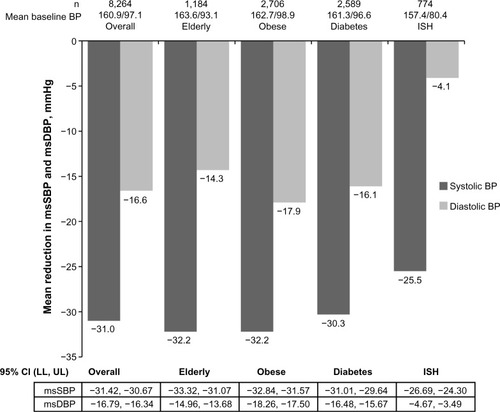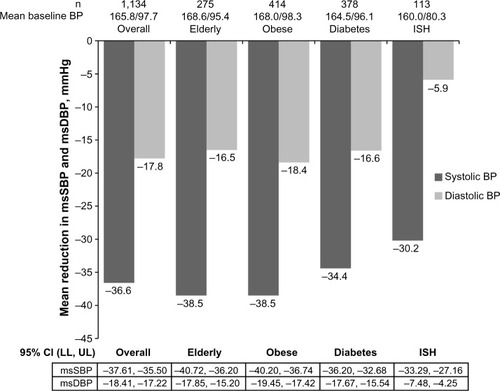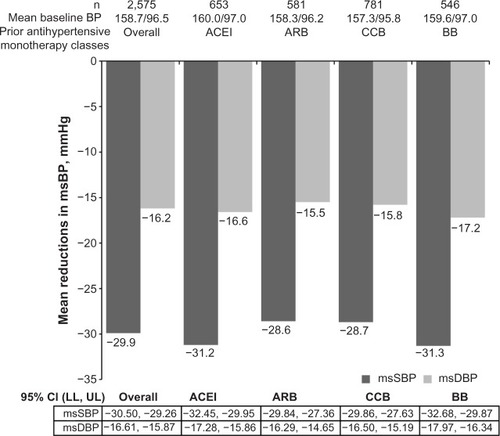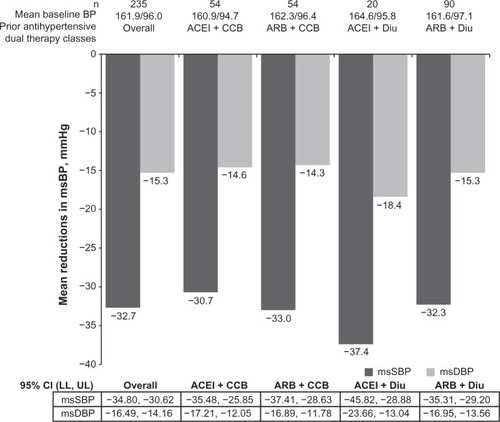Figures & data
Table 1 Summary of patient subgroups
Figure 1 Mean reductions in msSBP and msDBP at 26±8 weeks in subgroups treated with Aml/Val.
Abbreviations: Aml/Val, amlodipine/valsartan; BMI, body mass index; BP, blood pressure; CI, confidence interval; ISH, isolated systolic hypertension; LL, lower limit; msDBP, mean sitting diastolic blood pressure; msSBP, mean sitting systolic blood pressure; UL, upper limit.

Figure 2 Mean reductions in msSBP and msDBP at 26±8 weeks in subgroups treated with Aml/Val/HCT.
Abbreviations: Aml/Val, amlodipine/valsartan; Aml/Val/HCT, amlodipine/valsartan/hydrochlorothiazide; BMI, body mass index; BP, blood pressure; CI, confidence interval; ISH, isolated systolic hypertension; LL, lower limit; msDBP, mean sitting diastolic blood pressure; msSBP, mean sitting systolic blood pressure; UL, upper limit.

Figure 3 Mean reductions in msSBP and msDBP with Aml/Val combination by prior antihypertensive monotherapy class.
Abbreviations: ACEI, angiotensin-converting enzyme inhibitor; Aml/Val, amlodipine/valsartan; Aml/Val/HCT, amlodipine/valsartan/hydrochlorothiazide; ARB, angiotensin receptor blocker; BB, beta-blocker; BP, blood pressure; CCB, calcium channel blocker; CI, confidence interval; LL, lower limit; msBP, mean sitting blood pressure; msDBP, mean sitting diastolic blood pressure; msSBP, mean sitting systolic blood pressure; UL, upper limit.

Figure 4 Mean reductions in msSBP and msDBP with Aml/Val/HCT combination by prior antihypertensive dual therapy classes.
Abbreviations: ACEI, angiotensin-converting enzyme inhibitor; Aml/Val, amlodipine/valsartan; Aml/Val/HCT, amlodipine/valsartan/hydrochlorothiazide; ARB, angiotensin receptor blocker; BBs, beta-blockers; BP, blood pressure; CCB, calcium channel blocker; CI, confidence interval; Diu, diuretic; LL, lower limit; msBP, mean sitting blood pressure; msDBP, mean sitting diastolic blood pressure; msSBP, mean sitting systolic blood pressure; UL, upper limit.

